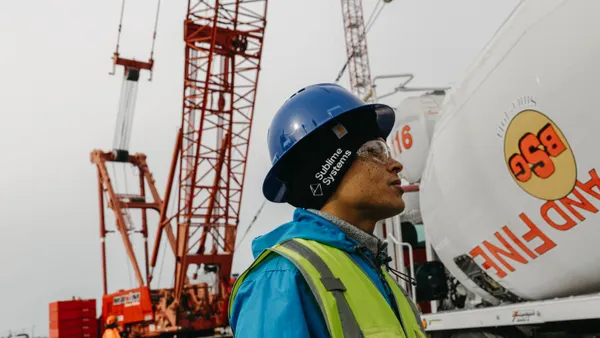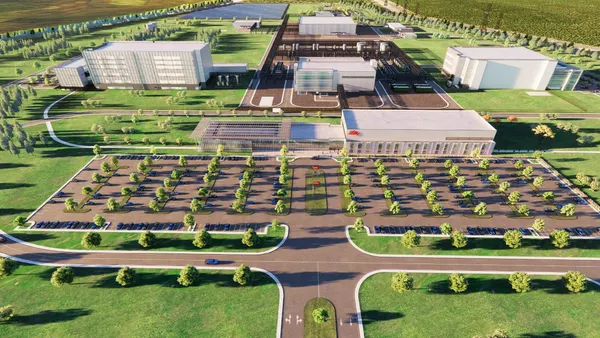Remember when your first job involved actual blueprints and not just clicking through endless software interfaces? When preparing budgets meant grinding through binders and reference guides instead of staring at dashboards? Those days had their charm, but let's face it—the world's moved on, and so have budget practices.
The Data Problem Nobody Wants to Talk About
Here's the truth most firms won't admit: Everyone's chasing fancy analytics while their underlying data is garbage of poor quality. It's like building a house on quicksand, then wondering why the walls are cracking.
Before diving into another pricey software package promising 'AI-driven insights,' first shore up the fundamentals. Quality reference data is foundational—skip it, and everything else is merely expensive decoration. Focusing on the 'wow factor' is often short-sighted; the most successful firms prioritize investing in higher-quality historical data.
Finding References That Actually Matter
Think of this like creating a killer mixtape back in the day. You wouldn't throw any random tracks together—you'd curate them carefully for the right mood and flow. Your reference projects deserve the same attention.
Don't just grab the most recent projects and call it good. Your new hires need guidance to find the right historical references. Give them tools that suggest relevant projects, like Spotify does with music—because they weren't around when you built that landmark project in 2005.
Normalization: Not Just Corporate Doublespeak
Remember comparing cassette sound quality to CDs? Totally different technologies. The same principle applies when comparing projects across different eras.
That project from 2005 can't be directly compared to one from 2022 without adjustments for things like:
- Location differences
- Market conditions
- Inflation
- Complexity
- Building code changes
This isn't just academic—it's the difference between looking like a hero or a zero when the client invites you back to the dance or "...thanks you for your time and efforts."
From Guesswork to Actual Prediction
We all started our careers making educated guesses. Now we can do better. Use statistical analysis to predict quantities and costs when you have limited design information. Or just predict costs when you do have some understanding of design.
The key is understanding which statistical approach fits your situation:
- Average or Median costs for a balanced view
- High-end data points for worst-case scenarios
- Low-end figures for competitive bidding (be really careful with this one)
And for Pete's sake, watch for outliers. That one project where costs went 80% over average? There's probably a story there you don't want to repeat.
The Art of Refinement
Remember editing analog video? Making tiny adjustments that took hours? Budget optimization is similar, but thankfully faster.
Once you have initial predictions:
- Exclude irrelevant elements (shallow foundations when you know you need deep ones)
- Bring in specialized elements from other projects (like that advanced HVAC system the client keeps mentioning)
- Add or remove entire reference projects as you learn more about requirements
- Override any predictions as your confidence and knowledge about the budget grows
- Lock in allowances where costs are uncertain and decisions aren't baked
- Document your assumptions to help you defend your budget
The Bottom Line (Literally)
Every great album needs proper mastering, and every budget needs final adjustments:
- Fees
- Overheads
- Contingencies
- Escalations
And never—I repeat, never—give a single number as your initial response. Present a range: "The budget is $24.7 million, +20/-10%." This gives your client $22.2-29.6 million to work with. Remember when weather forecasters started giving precipitation probabilities instead of just "rain" or "no rain"? Same principle.
The Iteration Game
Remember how many drafts your first resume went through? Budgets follow the same path. They evolve as design information becomes available and requirements change. Track these iterations religiously. Clients always ask, "How did we get here?" and you'd better have an answer that doesn't involve a meandering story. Don't forget, they always remember your first response, so you want to be as accurate as possible.
Time Is Money (No, Really)
The days of taking two weeks to prepare a detailed estimate are gone. Your competition is doing it faster, and your clients are under greater pressure. Which means you're under greater pressure.
Develop processes that separate tire-kickers from serious clients quickly. Pour your energy into the opportunities that matter and streamline everything else. Simply put, if you can reduce the time and effort of accurately responding to opportunities, your team can pursue more of them.
Because in the end, while technology changes, one thing remains the same: Nobody likes to wait. Not the clients who grew up with instant gratification, not your boss who needs the numbers for tomorrow's meeting, and certainly not the competition who's figuring out how to do all this faster and cheaper than you are.
Welcome to the new world—same as the old world, just with better tools and less time.










